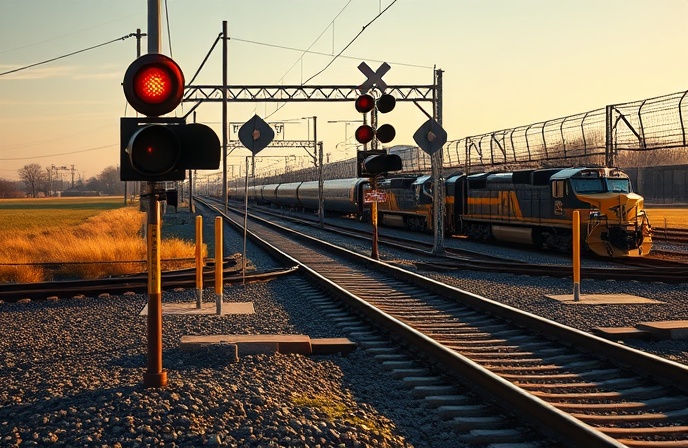HS2: High-Speed Rail Revolution, UK

The HS2 High-Speed Train Project: A Technological and Economic Analysis
This article delves into the significant $2.6 billion (£1.97 billion) contract awarded to the Hitachi/Alstom joint venture (JV) for the design, construction, and maintenance of 54 high-speed electric trains for Phase 1 of the High Speed Two (HS2) rail project in the United Kingdom. The project represents a substantial investment in modernizing Britain’s rail infrastructure, promising enhanced connectivity, increased capacity, and significant environmental benefits. We will explore the technological advancements embodied in these trains, the economic impact of the project on various UK regions, the collaborative nature of the undertaking, and the broader implications for the future of high-speed rail in the UK and beyond. The analysis will consider the strategic partnerships, manufacturing processes, and long-term operational considerations involved in delivering this ambitious project.
Technological Advancements in High-Speed Rail
The HS2 trains, manufactured by the Hitachi-Alstom High Speed (HAH-S) JV, represent a significant leap forward in high-speed rail technology. These 200-meter-long, eight-car trains are designed for a maximum speed of 360 km/h (approximately 224 mph). Their lightweight and aerodynamic design, coupled with energy-efficient traction technology and a regenerative braking system, contributes to significant fuel savings and reduced environmental impact. The 15% weight reduction compared to similar European trains allows for greater efficiency and lower energy consumption. Furthermore, the incorporation of 30% more seats per train will significantly enhance passenger capacity on the HS2 network and improve overall service levels. The collaborative design process, involving HS2, the Department for Transport, and West Coast Partnership, ensured the trains meet the specific operational needs and passenger expectations.
Economic Impact and Regional Development
The HS2 project extends beyond the mere provision of new trains; it acts as a catalyst for economic growth across several UK regions. The manufacturing and assembly of the trains will take place at facilities in County Durham (Newton Aycliffe), Derby (Litchurch Lane), and Crewe, generating numerous jobs and boosting local economies. The 12-year maintenance contract further guarantees long-term employment opportunities and economic stability in these regions. The project also stimulates broader economic activity through associated infrastructure development, supply chain activities, and increased tourism potential once the high-speed rail network is fully operational. The enhanced connectivity facilitated by HS2 will improve access to markets and employment opportunities for communities along the route, including Stoke, Crewe, Liverpool, Carlisle, Manchester, Motherwell, and Glasgow.
Strategic Partnerships and Collaborative Design
The success of the HS2 project hinges on the collaborative efforts of various stakeholders. The 50/50 JV between Hitachi and Alstom demonstrates the power of international partnerships in delivering complex infrastructure projects. Each company brings its own unique expertise and capabilities to the table, enabling the efficient design, manufacture, and maintenance of these state-of-the-art trains. The collaborative design process, involving HS2, the Department for Transport, and the train operator, ensures the trains meet the specific needs and requirements of the entire system. This integrated approach streamlines the project, optimizes resource allocation, and mitigates potential risks.
Conclusion: A Vision for the Future of British Rail
The award of the HS2 train contract to the Hitachi/Alstom JV marks a pivotal moment in the modernization of Britain’s rail network. The project represents a significant investment in high-speed rail technology, promising substantial improvements in passenger experience, increased connectivity across the country, and significant environmental benefits. The economic impact extends beyond the immediate job creation in the manufacturing and maintenance sectors, stimulating wider economic activity and regional development. The success of the project rests on the strategic partnerships, the advanced technological features of the trains, and the collaborative efforts of all stakeholders involved. The collaborative design process, incorporating input from HS2, the Department for Transport, and the operating company, ensures that the final product meets the needs of the broader rail system. The focus on lightweight, aerodynamic design, energy-efficient traction, and regenerative braking signifies a commitment to environmentally conscious transportation. This project serves not only as an upgrade for the UK’s rail network but also establishes a framework for future high-speed rail developments, both nationally and internationally. The successful delivery of this project demonstrates the ability of the UK to undertake large-scale, complex infrastructure projects and underscores the ongoing importance of investment in both high-speed rail and the manufacturing sector. The long-term maintenance contract underscores the project’s sustainable economic impact, providing job security and fostering regional economic growth. The HS2 project, therefore, represents more than just a transportation upgrade; it’s a strategic investment in the future of British infrastructure, economic competitiveness, and environmentally sustainable transportation solutions.



